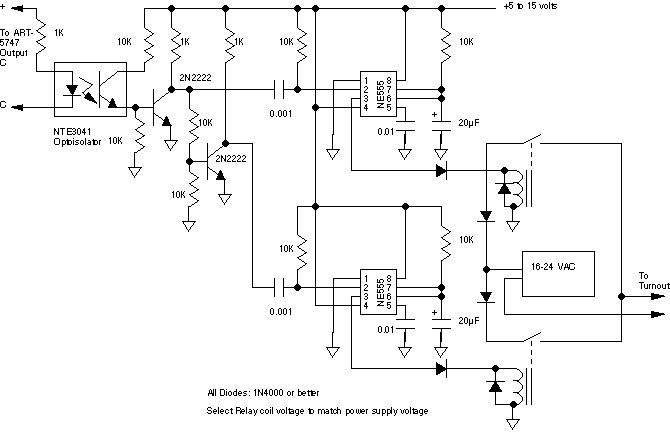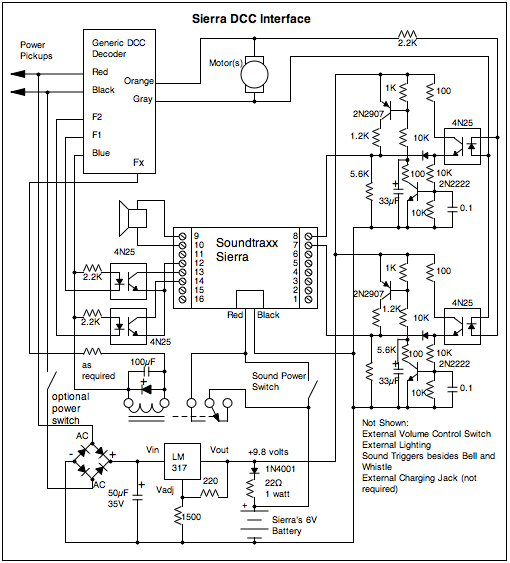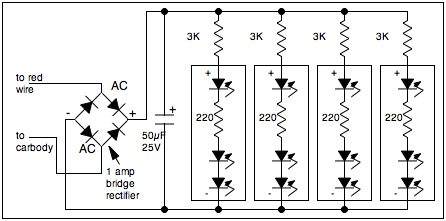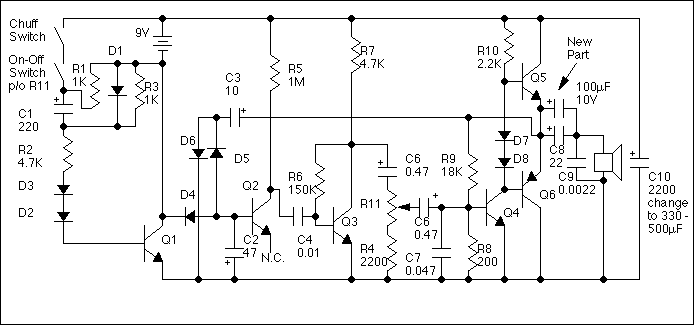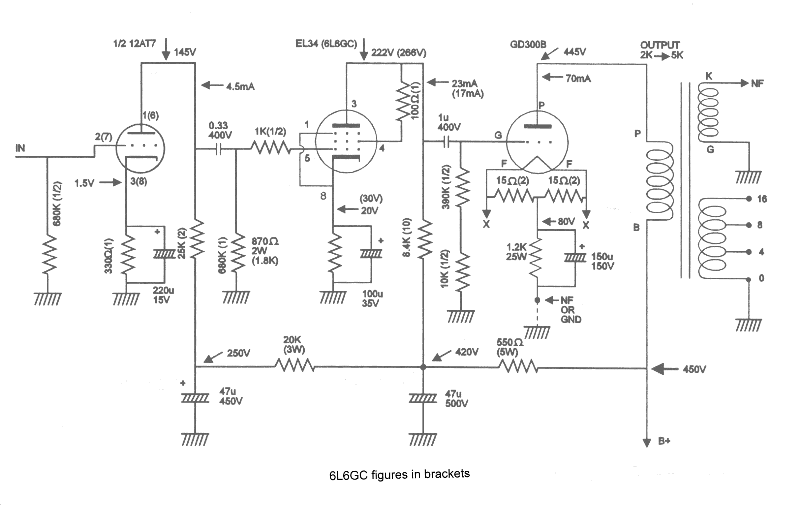
USAT F3A Tips
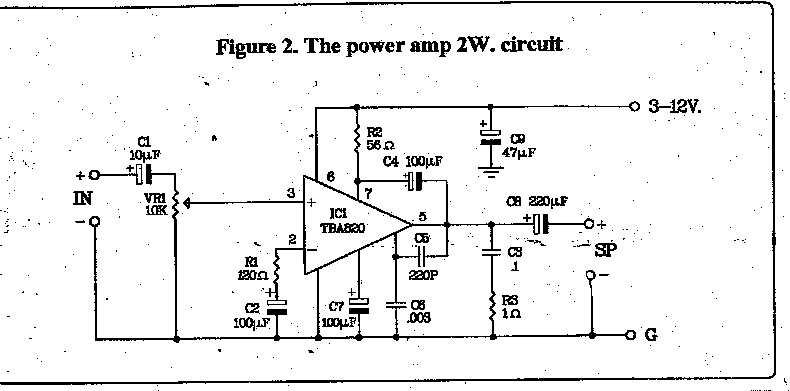
A used USAT F3A has come into possession. This was unexpected, but it adds another locomotive to the GIRR collection. The model is designated with the road number 26C. According to the ATSF numbering scheme from that period, this unit would be the trailing cab of an AA, ABA, or ABBA set, while the leading locomotive would be labeled 26L. After ATSF ceased operating matched sets, each locomotive received a unique number. Some units from this class were later rebuilt as CF-7s. This model resembles the USA Trains GP-7/9 purchased in 1998 but features newer construction. The manufacturing date is unknown, but the switchboard is dated August 12, 1999. This model has a bank of five slide switches underneath, in contrast to the four-switch configuration of the GP-9. Aside from some wiring issues, it appears largely similar. The model is well-detailed and robustly constructed, equipped with wheels featuring traction tires and sliders. Due to the minimal investment in this locomotive, upgrades will not be pursued, and the existing wheels and sliders will remain. The wheels show some wear, indicating prior use, but are not severely pitted, and efforts will be made to maintain their condition. The GP-9 experienced significant wheel issues due to various conditions that can now be mitigated. The layout is equipped with a powerful DCC booster capable of providing peak currents exceeding 20 amps. The decoder used in the GP-9 is also a high-current type, suitable for the high-current motors present in the F3A. This combination of high available current, low stall impedance motors, and lack of current limiting can lead to burned wheels, which will be avoided in this case. Initial tests on a dirty track revealed sputtering, but cleaning a section allowed for smooth operation. The sliders are in poor condition and will be cleaned to compensate for the loss of power pickup from four wheels due to the traction tires. Current draw tests indicated that, when running light on DC with the headlight on and smoke off, the locomotive drew 1.8 amps, and at full slip, it drew 3.4 amps. The stall current was not tested due to the anticipated high value, but stall resistance measurements were taken. At the wheels, stall resistance was approximately 1 ohm, while at the power pickup connectors on both trucks, it measured 0.6 ohms. This results in a stall current exceeding 30 amps at 20 volts, consistent with measurements from the GP-9. Accessing the F3A is relatively straightforward with the proper tools, requiring a long, slender #1 Phillips screwdriver to reach the nine fasteners. There are four screws along each side, and the fuel tank must be removed to access the center two on each side. The most challenging screw is located at the front, partially obscured by the front truck. The screwdriver must fit between a wheel back and the brick to remove this fastener. Once all screws are removed, the frame can be pulled out, though it may hang up on rear brake line pins that need to be pushed partially out for clearance. The strap hangers on the Blomberg type B trucks are prone to falling off; a small drop of gel CA (e.g., Loctite brand) at the bottom of the hanger can prevent the lower part from pushing outward, which can cause the upper tab to come loose.
The USAT F3A locomotive model is a robust piece of engineering, designed for durability and performance. It features a well-constructed chassis, which is significant for model railroading as it provides stability during operation. The locomotive is equipped with a DCC-compatible decoder that allows for precise control over speed and direction, enhancing the overall experience of operating the model. The inclusion of traction tires aids in improving the locomotive's grip on the track, especially important when navigating inclines or pulling heavier loads.
The electrical characteristics of the locomotive are noteworthy, particularly the stall current measurements, which indicate the potential for high power draw under certain conditions. The stall resistance readings suggest that the motors are capable of delivering substantial torque, making the F3A suitable for demanding tasks on the layout. However, careful management of current draw is essential to prevent overheating and damage to the wheels, especially given the high currents available from the DCC booster.
Maintenance considerations are also critical for the longevity of the locomotive. Regular cleaning of the track and wheels will help maintain optimal performance. The condition of the sliders is particularly important, as they contribute to power pickup. Ensuring that all components are in good working order will prevent issues related to intermittent power loss or stalling during operation.
In summary, the USAT F3A is a well-designed model that offers both aesthetic appeal and functional performance. With proper care and attention to its electrical characteristics, it can serve as a reliable addition to any model railroading setup.A used USAT F3A found it`s way into my possession today. I wasn`t planning on this, it just sort of happened. However, now I have another loco for the GIRR. The road number of the model is 26C. By the ATSF numbering scheme used at the time, this would be the trailing cab unit of an AA, ABA or ABBA set. The lead loco would be designated 26L. After ATSF stopped running them in matched sets, each loco would receive a unique number. Some of the locos in this class were eventually rebuilt as CF-7`s. This particular model is similar to the USA Trains GP-7/9 that I purchased in 1998 but it is of somewhat newer construction. I do not know the date of manufacture, but the switch board is dated 12 Aug 1999. This one has a bank of 5 slide switches underneath as opposed to the 4 switch configuration of my GP-9.
However, other than some wiring issues, it appears to be pretty much the same. The model is well detailed and heavily built. It still has wheels with traction tires and sliders. Since my investment in this loco is really small right now, I`m not going to go far out of pocket to upgrade it so the existing wheels and sliders will stay on this one. The wheels are somewhat worn indicating that this one has some miles on it. However, they are not seriously pitted now and I intend to keep them that way. My GP-9 had serious wheel problems due to a combination of conditions that I now know how to mitigate.
My layout has a really beefy DCC booster which can provide very high peak currents, in excess of 20 amps. The decoder I used in the GP-9 is also a very high current decoder to match the high current motors, which the F3A still has.
The combination of high available current, motors with nearly zero stall impedance and no current limiting results in burned up wheels. I`ll not let that happen again. I put the loco on my dirty track that hadn`t been cleaned in more than a month and it sputtered badly.
When I cleaned one section, it ran fine on that section. The sliders are also not in good condition, I will clean them up as they will be needed to offset the loss of 4 wheels worth of power pickup due to the traction tires. I did some initial current draw tests on this loco. Running light on DC it drew 1. 8 amps with the headlight on and smoke off. At full slip, it draws 3. 4 amps. I did not try to test the stall current as I knew it would be very high and I didn`t want to stress the thing by physically trying to stall it.
Instead, I measured the stall resistance. At the wheels, the stall resistance is about 1 ohm. Measured at the power pickup connectors on both trucks, the stall resistance is 0. 6 ohms. This results in a stall current of over 30 amps at 20 volts. This is in line with my measurements on the GP-9. The F3A is reasonably easy to get into if you have the right tools. It takes a long slender #1 Phillips screwdriver to reach down into the 9 places where there is a fastener. The tall posts are the locations of the screws. There are four along each side. The fuel tank has to be removed to access the center two on each side. It`s the one in the front that is difficult. It is centered right in front of, and partially obscured by, the front truck. This is where the long slender screwdriver comes in handy. The front truck has to be rotated so that the screwdriver can fit between a wheel back and the brick.
Then the 9th screw can be removed. The frame will then pull out but it might hang up on each side at the rear on a pin that holds the rear brake lines on. Push those details partially out so that the frame will clear. The strap hangers on the Blomberg type B trucks have a tendency to fall off. Over the years, I`ve lost two from the GP-9. I`ve found that a very small drop of gel CA (I use Loktite brand) placed at the bottom of the hanger will prevent the lower part of the hanger from being pushed outward which promotes the tab at the top coming loose.
This very small bond wi 🔗 External reference
The USAT F3A locomotive model is a robust piece of engineering, designed for durability and performance. It features a well-constructed chassis, which is significant for model railroading as it provides stability during operation. The locomotive is equipped with a DCC-compatible decoder that allows for precise control over speed and direction, enhancing the overall experience of operating the model. The inclusion of traction tires aids in improving the locomotive's grip on the track, especially important when navigating inclines or pulling heavier loads.
The electrical characteristics of the locomotive are noteworthy, particularly the stall current measurements, which indicate the potential for high power draw under certain conditions. The stall resistance readings suggest that the motors are capable of delivering substantial torque, making the F3A suitable for demanding tasks on the layout. However, careful management of current draw is essential to prevent overheating and damage to the wheels, especially given the high currents available from the DCC booster.
Maintenance considerations are also critical for the longevity of the locomotive. Regular cleaning of the track and wheels will help maintain optimal performance. The condition of the sliders is particularly important, as they contribute to power pickup. Ensuring that all components are in good working order will prevent issues related to intermittent power loss or stalling during operation.
In summary, the USAT F3A is a well-designed model that offers both aesthetic appeal and functional performance. With proper care and attention to its electrical characteristics, it can serve as a reliable addition to any model railroading setup.A used USAT F3A found it`s way into my possession today. I wasn`t planning on this, it just sort of happened. However, now I have another loco for the GIRR. The road number of the model is 26C. By the ATSF numbering scheme used at the time, this would be the trailing cab unit of an AA, ABA or ABBA set. The lead loco would be designated 26L. After ATSF stopped running them in matched sets, each loco would receive a unique number. Some of the locos in this class were eventually rebuilt as CF-7`s. This particular model is similar to the USA Trains GP-7/9 that I purchased in 1998 but it is of somewhat newer construction. I do not know the date of manufacture, but the switch board is dated 12 Aug 1999. This one has a bank of 5 slide switches underneath as opposed to the 4 switch configuration of my GP-9.
However, other than some wiring issues, it appears to be pretty much the same. The model is well detailed and heavily built. It still has wheels with traction tires and sliders. Since my investment in this loco is really small right now, I`m not going to go far out of pocket to upgrade it so the existing wheels and sliders will stay on this one. The wheels are somewhat worn indicating that this one has some miles on it. However, they are not seriously pitted now and I intend to keep them that way. My GP-9 had serious wheel problems due to a combination of conditions that I now know how to mitigate.
My layout has a really beefy DCC booster which can provide very high peak currents, in excess of 20 amps. The decoder I used in the GP-9 is also a very high current decoder to match the high current motors, which the F3A still has.
The combination of high available current, motors with nearly zero stall impedance and no current limiting results in burned up wheels. I`ll not let that happen again. I put the loco on my dirty track that hadn`t been cleaned in more than a month and it sputtered badly.
When I cleaned one section, it ran fine on that section. The sliders are also not in good condition, I will clean them up as they will be needed to offset the loss of 4 wheels worth of power pickup due to the traction tires. I did some initial current draw tests on this loco. Running light on DC it drew 1. 8 amps with the headlight on and smoke off. At full slip, it draws 3. 4 amps. I did not try to test the stall current as I knew it would be very high and I didn`t want to stress the thing by physically trying to stall it.
Instead, I measured the stall resistance. At the wheels, the stall resistance is about 1 ohm. Measured at the power pickup connectors on both trucks, the stall resistance is 0. 6 ohms. This results in a stall current of over 30 amps at 20 volts. This is in line with my measurements on the GP-9. The F3A is reasonably easy to get into if you have the right tools. It takes a long slender #1 Phillips screwdriver to reach down into the 9 places where there is a fastener. The tall posts are the locations of the screws. There are four along each side. The fuel tank has to be removed to access the center two on each side. It`s the one in the front that is difficult. It is centered right in front of, and partially obscured by, the front truck. This is where the long slender screwdriver comes in handy. The front truck has to be rotated so that the screwdriver can fit between a wheel back and the brick.
Then the 9th screw can be removed. The frame will then pull out but it might hang up on each side at the rear on a pin that holds the rear brake lines on. Push those details partially out so that the frame will clear. The strap hangers on the Blomberg type B trucks have a tendency to fall off. Over the years, I`ve lost two from the GP-9. I`ve found that a very small drop of gel CA (I use Loktite brand) placed at the bottom of the hanger will prevent the lower part of the hanger from being pushed outward which promotes the tab at the top coming loose.
This very small bond wi 🔗 External reference
